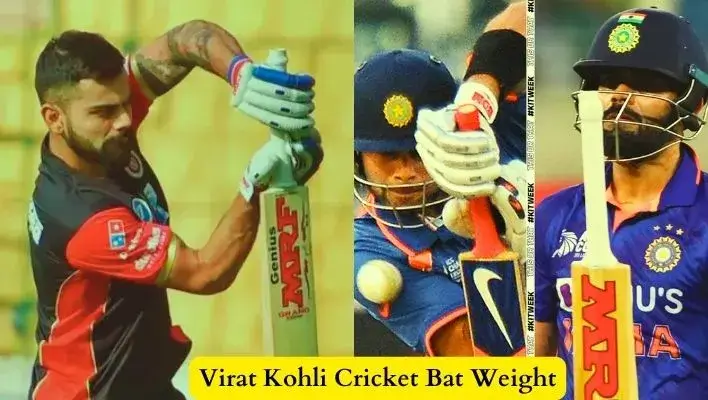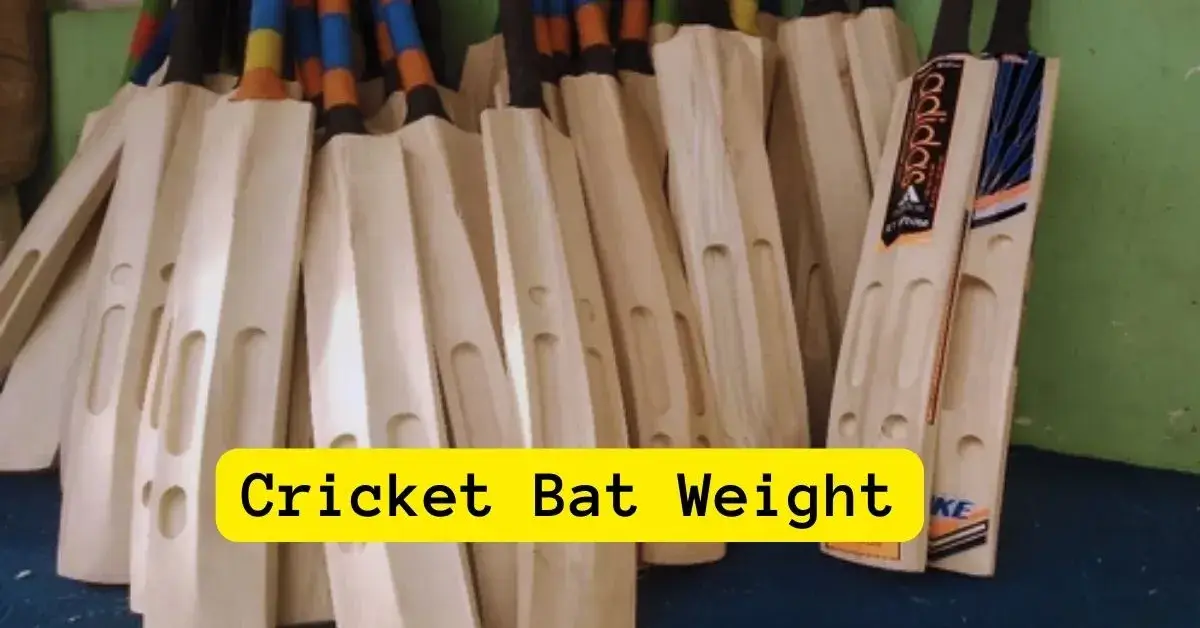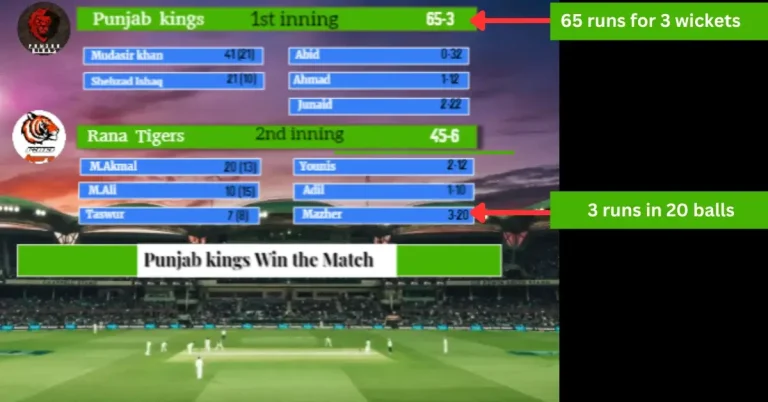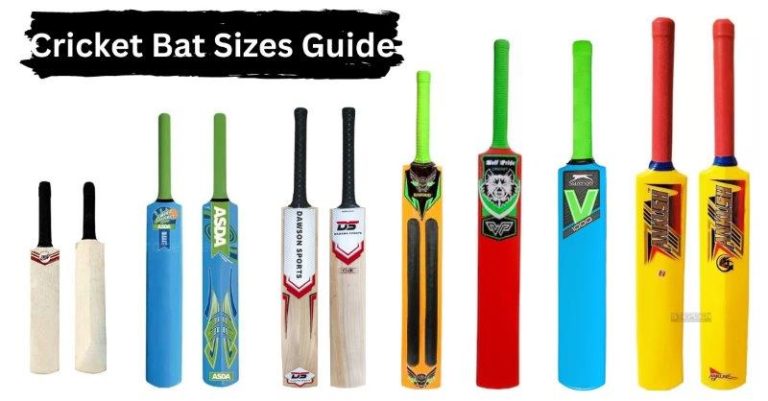Cricketers Bat Weight For T20, ODI & Test: Chossing Right One
The cricketer’s bat weight is more than just a number. The Cricketers bat weight is crucial for a cricketer performance. It affects how a batsman wields the willow, controls shots, and generates power. Selecting the bat to match your playing style is a key to success. In this article, we’ll explore bat weight, guide your choice, and reveal its impact on performance. Stay tuned to uncover this vital aspect of the game.
Cricketers Bat Weight For T20, ODI And Test Format
| Format | Bat Weight (Kilograms) | Bat Weight (Pounds and Ounces) | Bat weight (kg) |
| T20 | 1.1 to 1.2 | 2 pounds, 8 ounces to 2 pounds, 12 ounces | 1.1 to 1.2 |
| ODI | 1.2 to 1.3 | 2 pounds, 8 ounces to 2 pounds, 15 ounces | 1.2 to 1.3 |
| Test | 1.2 to 1.3 | 2 pounds, 8 ounces to 2 pounds, 15 ounces | 1.2 to 1.3 |
How To Choose The Right Bat Weight

Selecting the ideal bat weight is a crucial decision for cricketers. It involves balancing the need for power and control.
Batsmen should consider their physical strength, playing style, and personal preferences.
Testing different bat weights can help determine the most comfortable option. Therefore ensure that it complements their technique and maximizes their potential at the crease. See Also: Top 10 Best Cricket Bats In The World
The Impact On A Batsman’s Performance
Bat weight directly affects a batsman’s performance. A bat that’s too heavy can slow down bat speed and reduce shot control, while an overly light bat may compromise power and hitting ability. Therefore, picking the right bat is essential for consistent and effective performance.
Factors Influencing Bat Weight
Several factors influence the choice of bat weight, including a player’s physique, strength, and playing conditions. Knowing these factors and how they are interrelated can help cricketers in making well-informed decisions when selecting a bat for themselves. See Also: Top 10 Greatest Batsmens in History
The Role Of Balance In Cricket Bats
The balance of a cricket bat, often referred to as “pickup,” is a crucial element. Even a slightly heavier bat can feel lighter if well-balanced, which allows batsmen to play their shots more comfortably and confidently.
Light Bats VS. Heavy Bats
Lightweight bats offer maneuverability and speed, making them suitable for stroke players. In contrast, heavy bats provide power, ideal for aggressive players looking to clear boundaries. However, the choice between a light or heavy bat depends on a player’s playing style and strength.

Disadvantages Of Heavy Bat Weight
- Reduced bat speed, making it difficult to react quickly to fast deliveries.
- Increased fatigue over extended periods of play, affecting endurance.
- Increased risk of musculoskeletal injuries due to the strain of using a heavy bat.
- Diminished shot control, potentially leading to mistimed shots and dismissals.
- Challenges in playing certain types of shots that require agility and precision.
Ideal Bat Weight Matching Playing Styles
Different playing styles require different bat weights. Aggressive players prefer slightly heavier bats, while classical or defensive players may opt for lighter options. All-rounders seek a balanced bat that provides power and control in equal measure.
Techniques For Handling Heavier Bats
For those choosing a heavier bat, developing the strength and technique to handle it effectively is essential. This includes:
Strength and Conditioning: Develop physical strength in wrists, forearms, and upper body.
Proper Stance and Grip: Work on the right stance and grip for balance and control.

Regular Practice: Practice with a heavier bat to build muscle memory and adapt to the weight, enhancing shot-making abilities over time. See Also: How To Play A Switch Hit In Cricket
Cricket Bat Regulations
Cricket governing bodies, such as the International Cricket Council (ICC), have strict regulations regarding bat dimensions, including weight. Bats must adhere to these guidelines to maintain fairness and competitiveness in the sport.
Customizing Bat Weight
Many cricket manufacturers offer the option to customize Cricketers bat weight. Players can tailor their bat to meet their specific requirements, ensuring the perfect balance between power and control.
Common Myths About Bat Weight
There are several myths surrounding bat weight, and it’s crucial to debunk these misconceptions. Understanding the truth about bat weight can help players make more informed decisions. See Also: Best Way to Enjoy Live Cricket
Recommendations For Young Cricketers
Young cricketers should choose lighter bats to avoid potential injuries and develop proper techniques. As they grow and gain strength, they can gradually transition to heavier bats.
Virat Kohli Cricket Bat Weight

Virat Kohli’s cricket bat typically weighs around 1.15 to 1.2 kilograms (2 pounds, 8 ounces to 2 pounds, 12 ounces). This is a lighter bat, commonly chosen in T20 and ODI cricket. The lightweight design enables Kohli to swing the bat faster. In result he can play more powerful shots. See Also: Highest Score in Test Cricket
Top 10 Famous Cricketers Bat Weight
| Rank | Name | Bat Weight (KG) |
| 1 | Babar Azam | 1.15-1.2 |
| 2 | Virat Kohli | 1.15-1.2 |
| 3 | Suryakumar Yadav | 1.1-1.15 |
| 4 | Rohit Sharma | 1.2-1.25 |
| 5 | Jos Buttler | 1.15-1.2 |
| 6 | Steve Smith | 1.15-1.2 |
| 7 | Kane Williamson | 1.1-1.15 |
| 8 | Marnus Labuschagne | 1.15-1.2 |
| 9 | Travis Head | 1.15-1.2 |
| 10 | Dawid Malan | 1.15-1.2 |
Frequently Asked Questions
The standard weight of a cricket bat varies but typically ranges from 2.7 to 3 pounds (approximately 1.2 to 1.4 kilograms).
Heavier bats can help hit powerful shots, including sixes, but the choice between light and heavy depends on a player’s style and strength.
The balance of a cricket bat is largely determined during manufacturing, but some customization options are available to players.
Yes, young cricketers are typically advised to use lighter bats to ensure proper technique and prevent injuries.
Experimenting with different weights, considering your playing style and consulting with experienced players or coaches can help you find the right bat weight.







